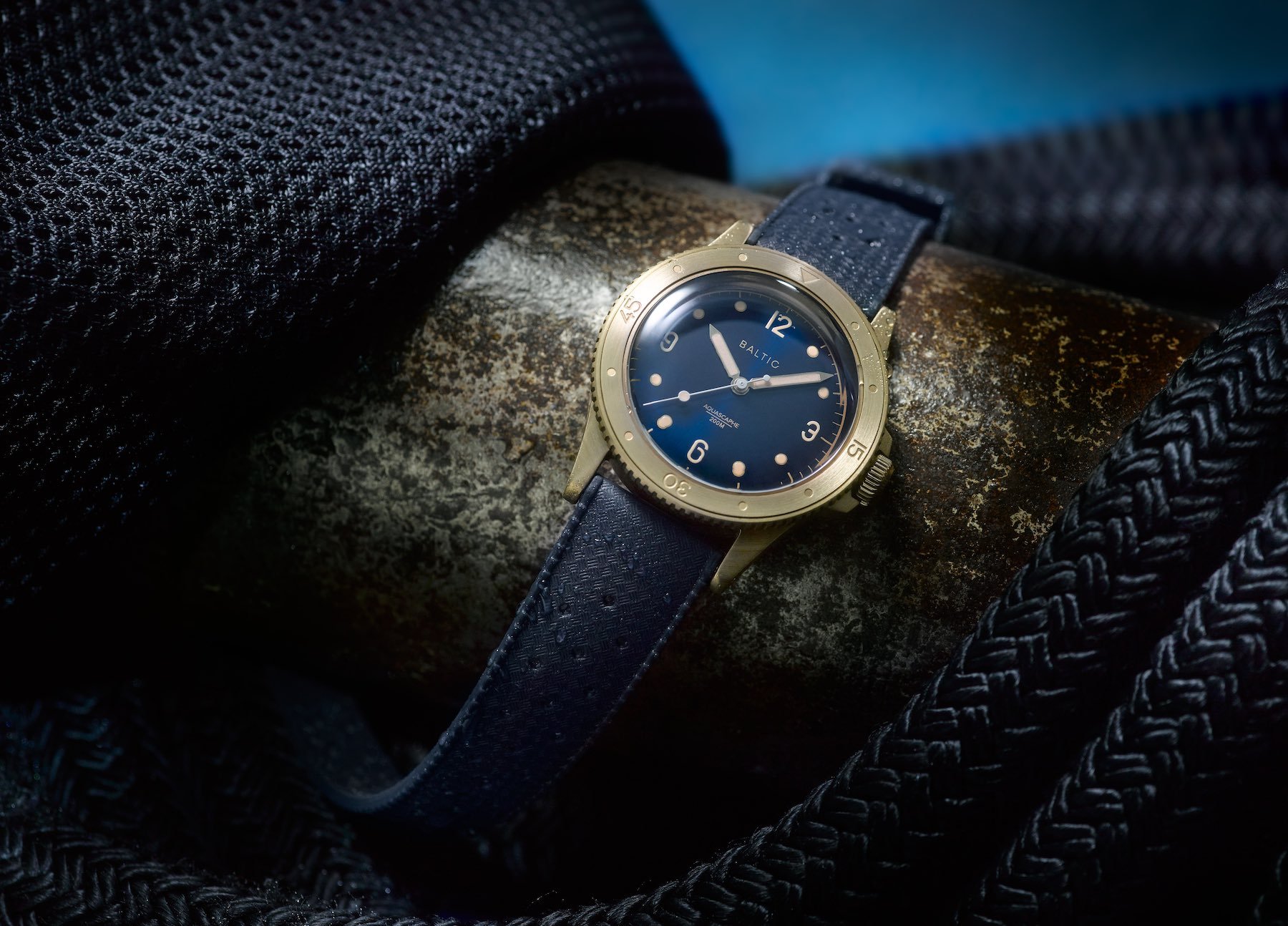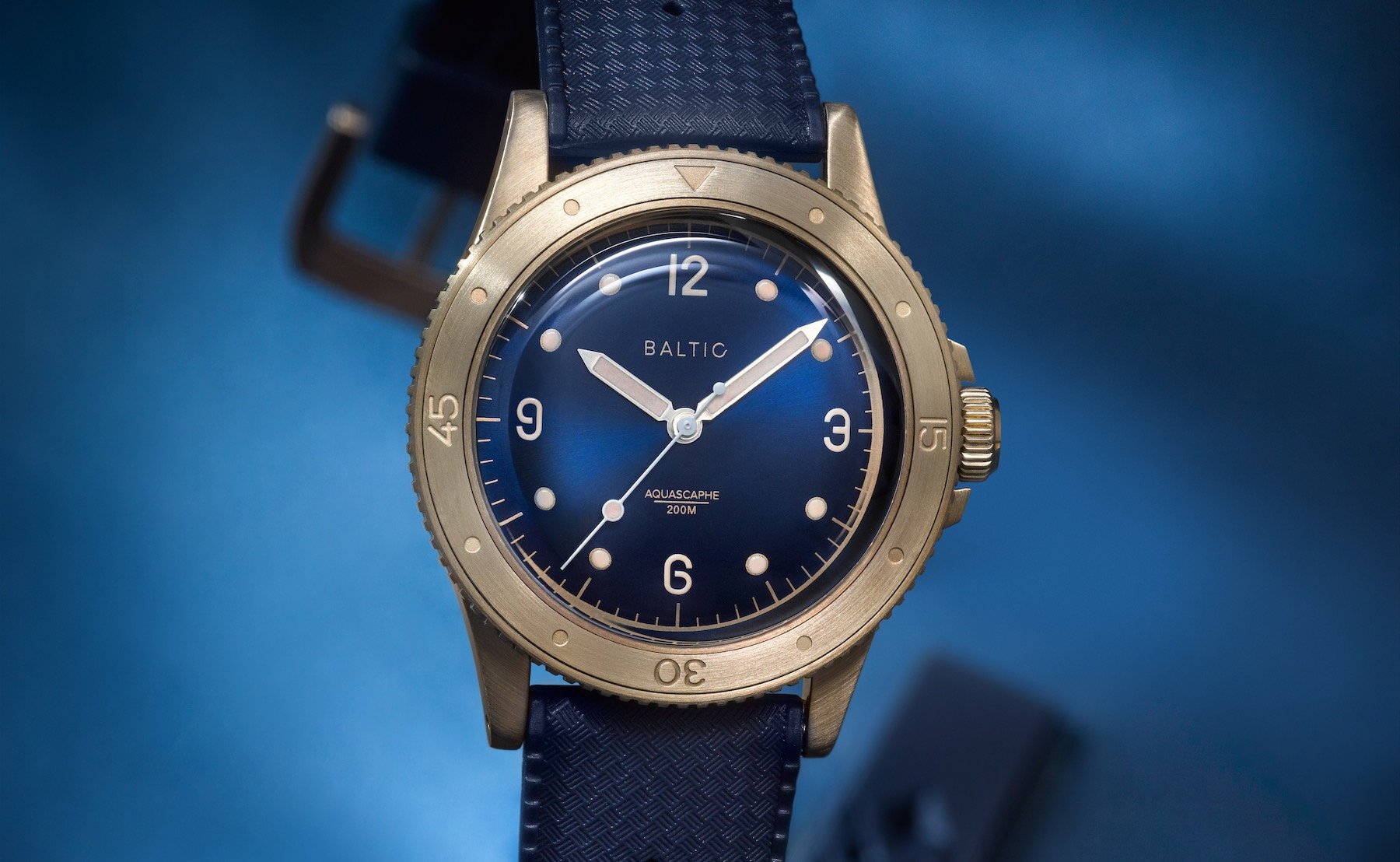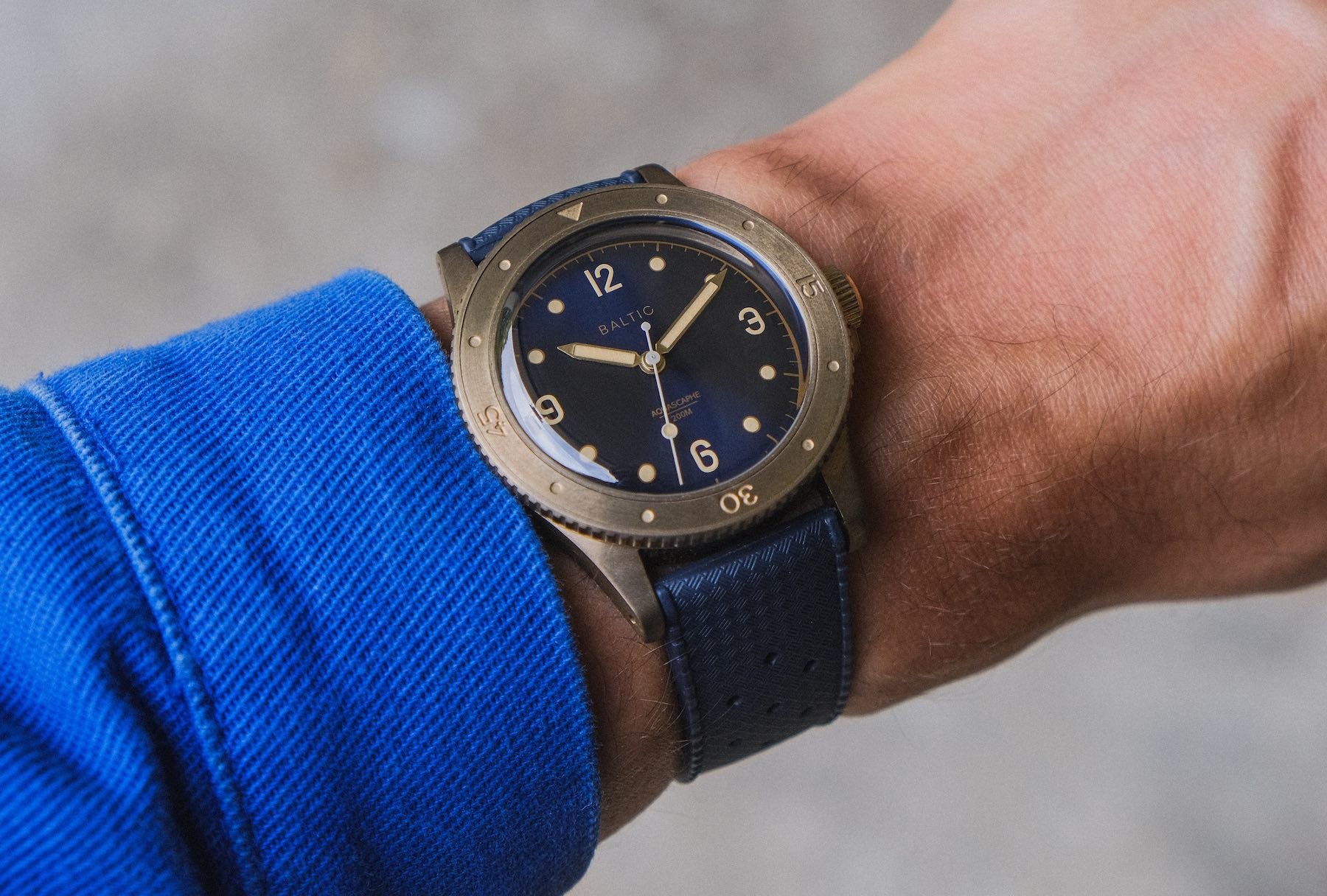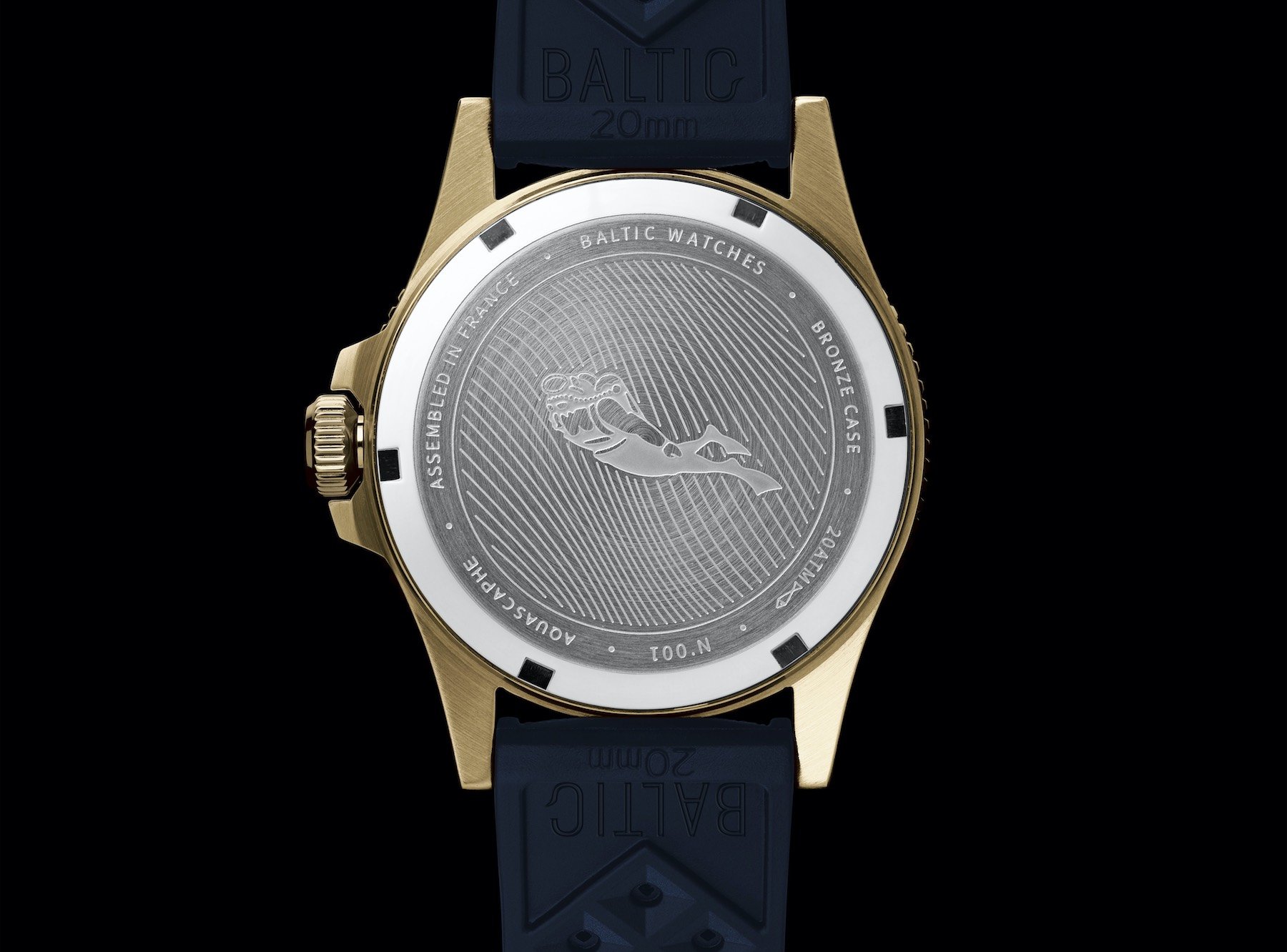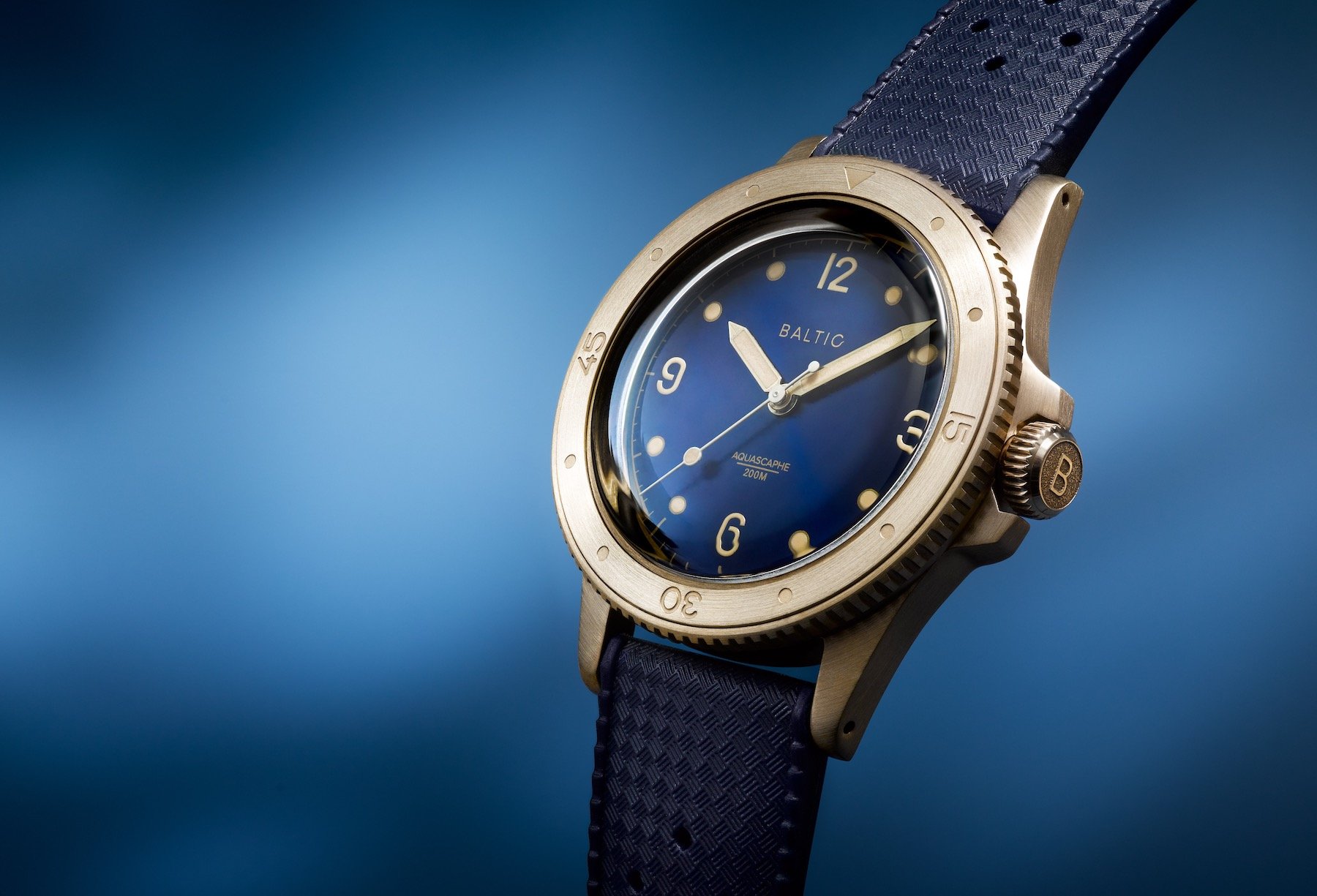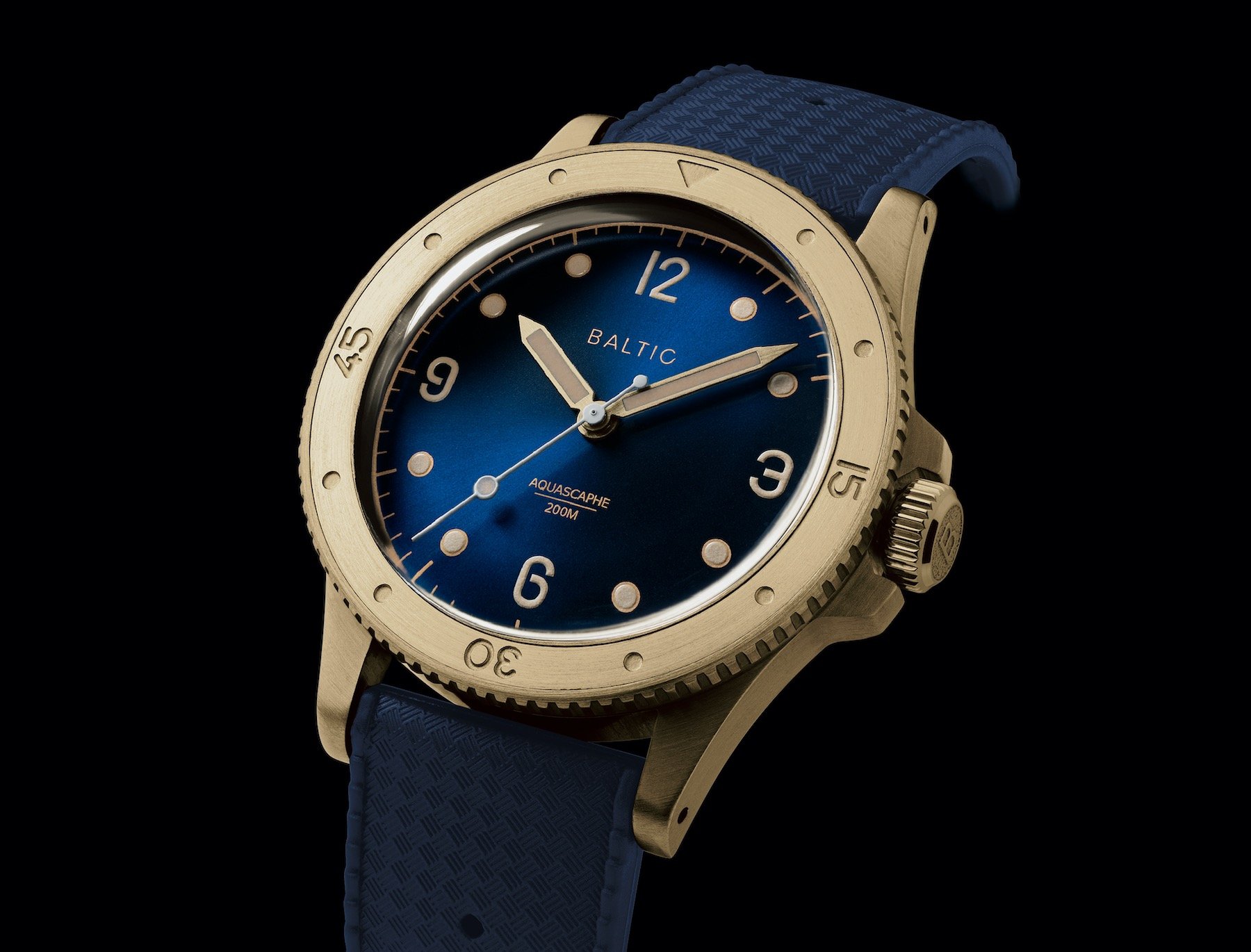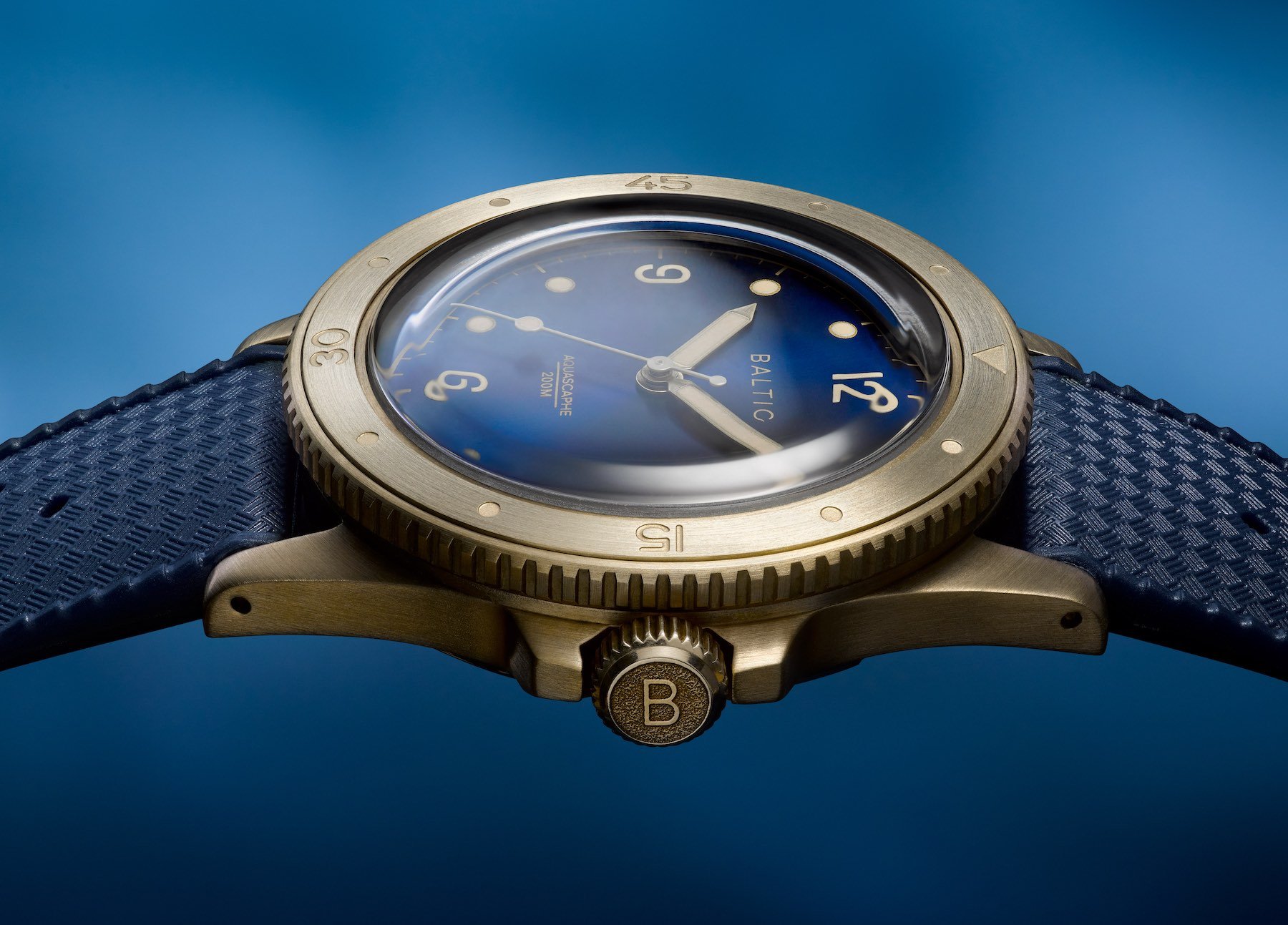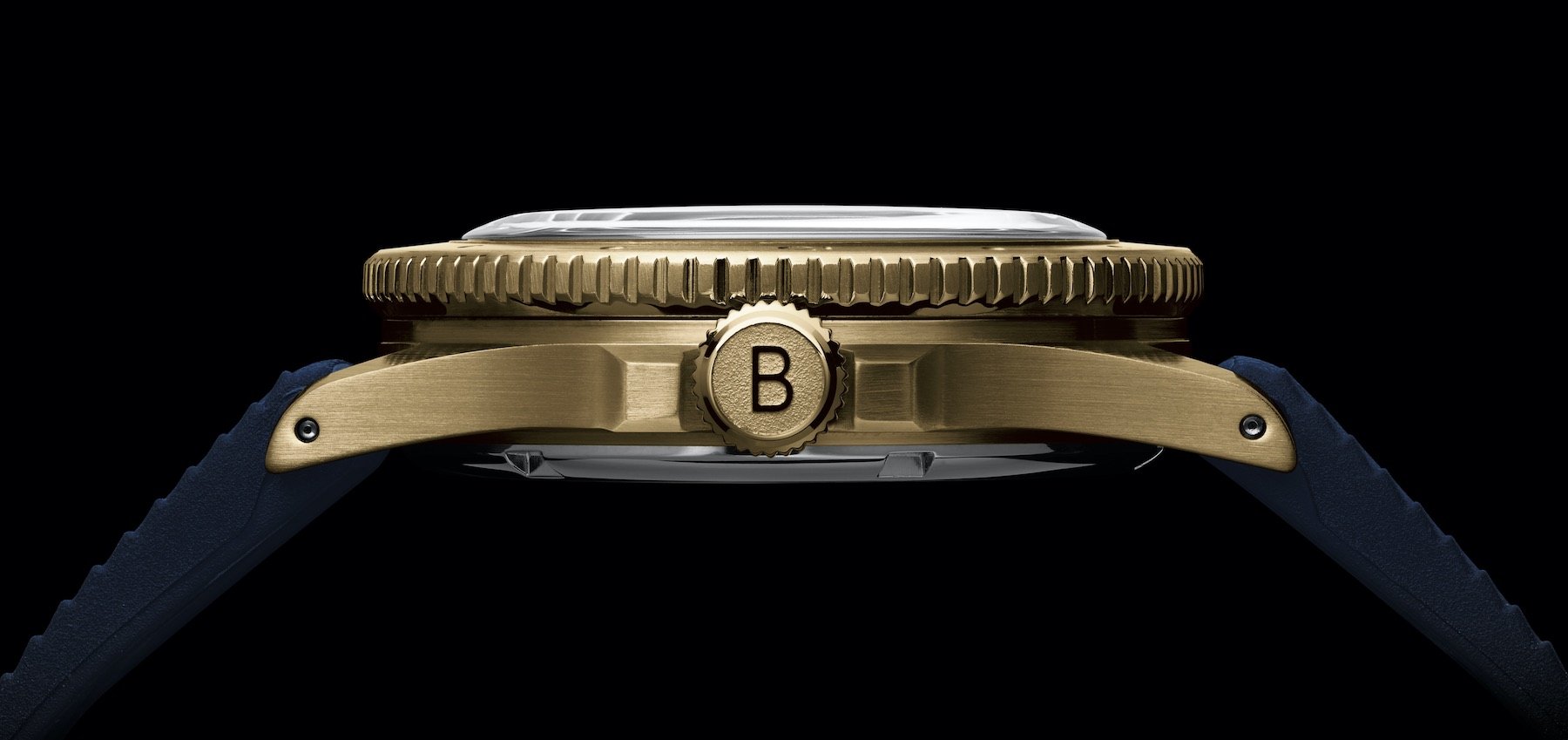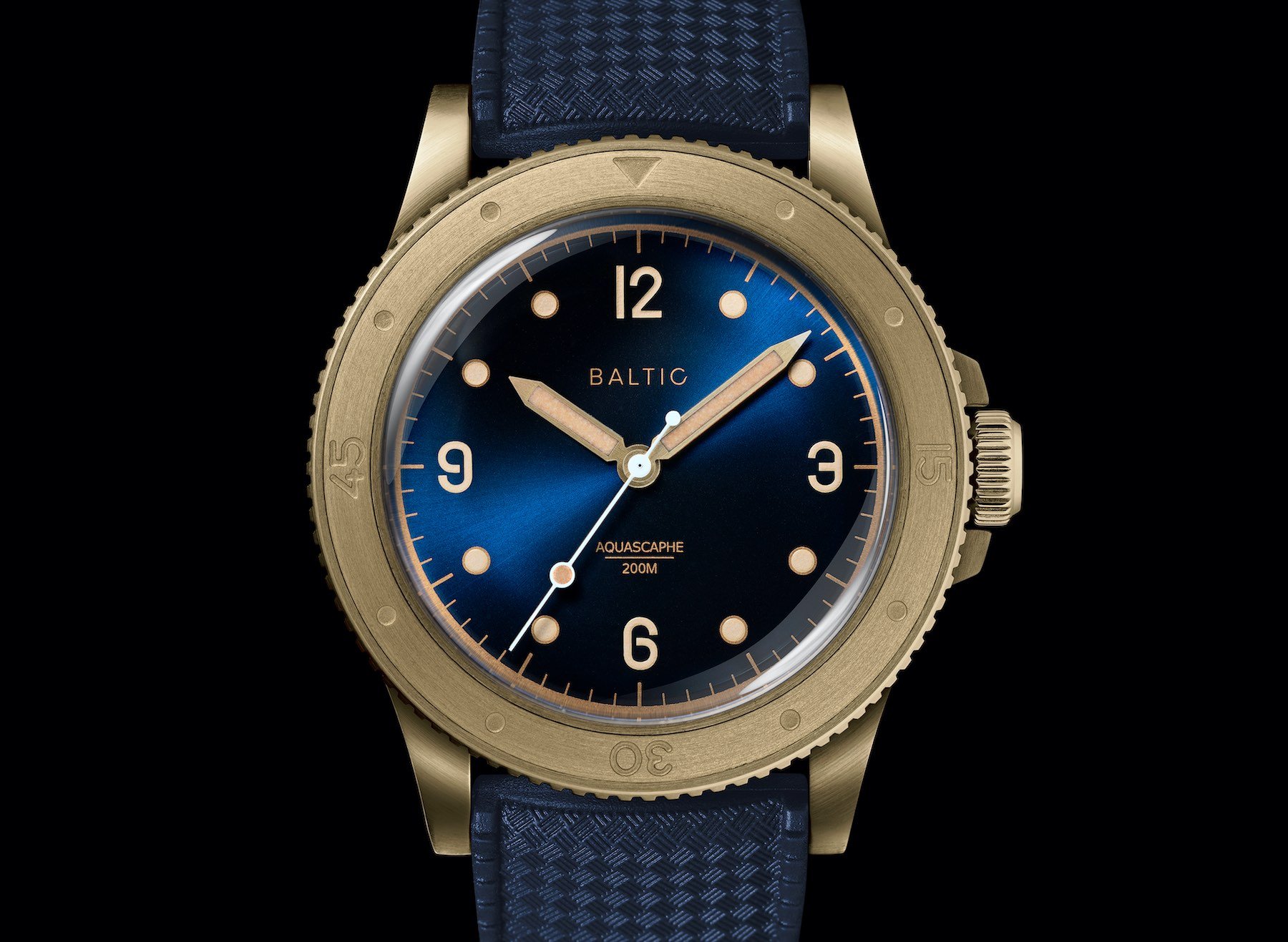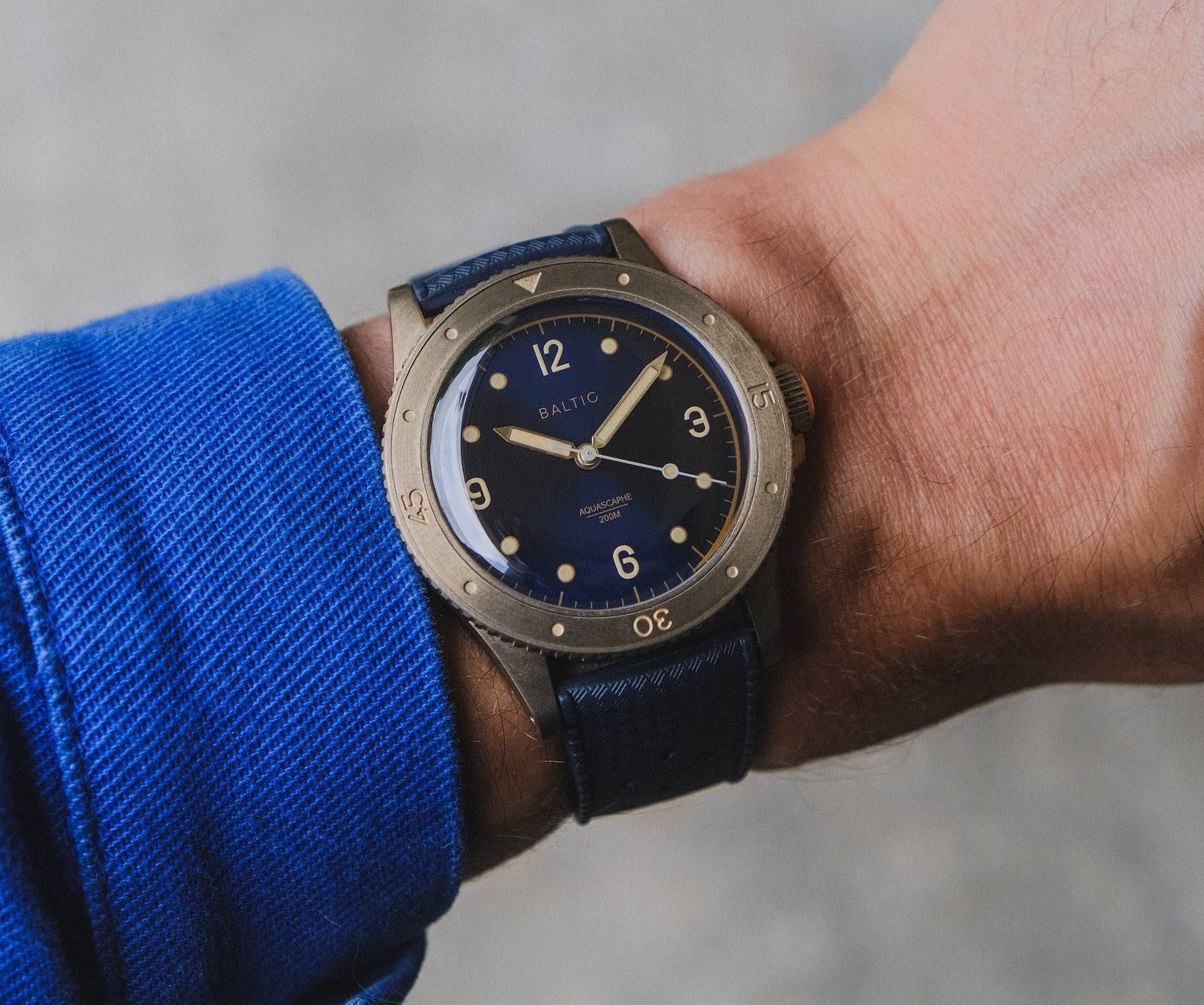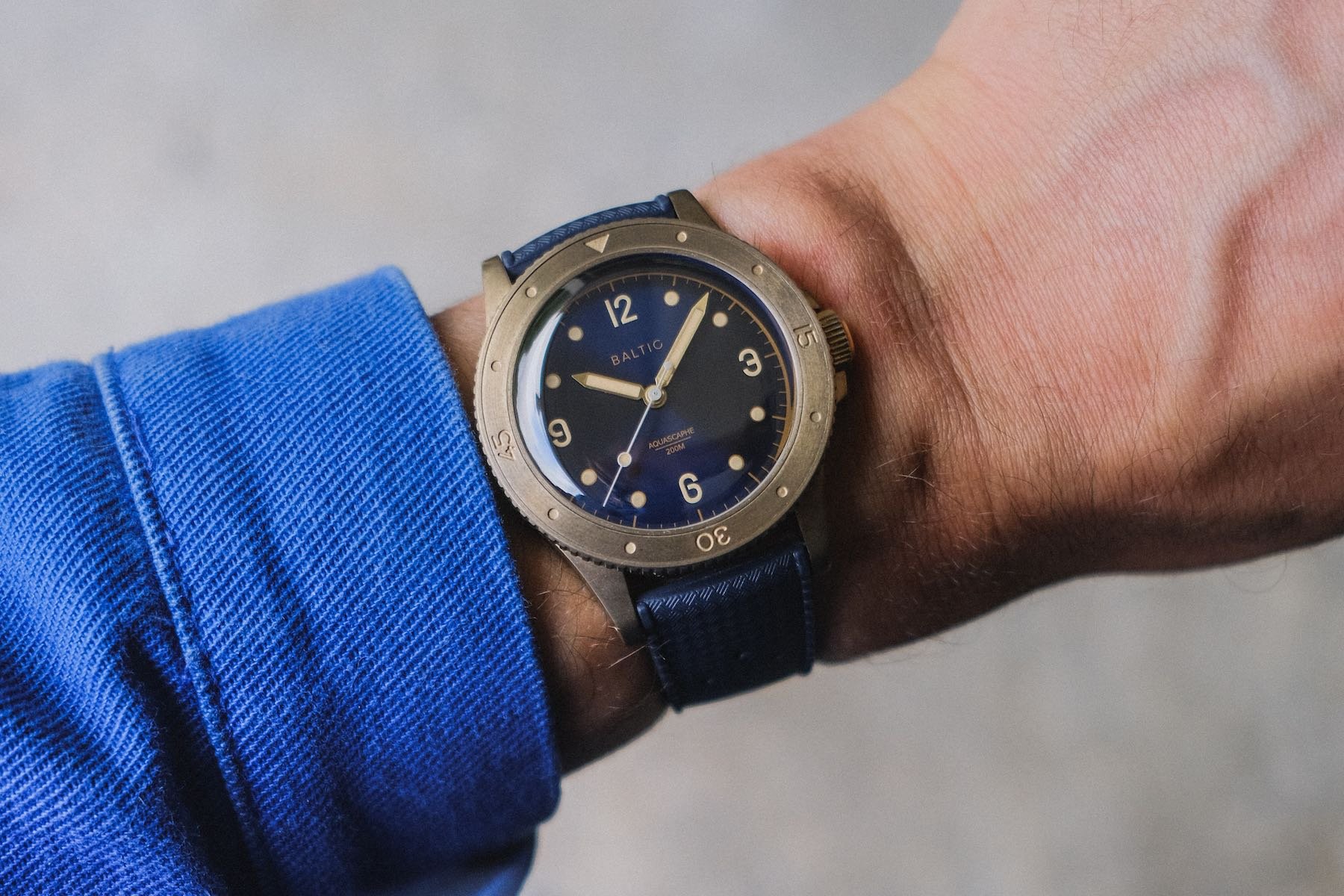The Baltic Aquascaphe Is A CuAl8 Bronze Beauty
There’s no telling how long bronze is going to stick around. When it first emerged as a luxury case material, naysayers came out in force. It was seen as a fad, as no more than a passing fancy. And yet, several years after the fact, it’s still here. Models like the Baltic Aquascaphe continue to prove its viability and relevance when turned towards certain styles of watch.
Bronze works particularly well for dive watches because it is so inextricably associated with maritime history. Used frequently in marine-machinery, bronze and the idea of seafaring go hand in hand. But if you do find yourself tempted to take the new Baltic Aquascaphe out for a spin on the high seas, be prepared for that CuAl8 bronze case to change its appearance pretty quickly.
All sorts of greenish growths
It’s kind of hard to imagine that anyone would want their luxury watch to acquire a strange, murky hue over time and exposure to the atmosphere/their wrist. But there is actually method to this apparent madness. You’ve just got to make sure you get the right kind of greenish growth on your timepiece. One is very good for it. The other? Well, let’s just say its a devastating and irreversible disease that will chew your watch to dust. But don’t worry. It’s not that common…
Some bronze watches look more like the crumbling components of the Antikathyra mechanism than they do the housing of a high-end timepiece. They may look super “cool” in Instagram posts, but they are quite possibly suffering from bronze disease, which is not so good.
…give your new Baltic a little time to acclimatize…
Bronze disease is a damaging condition. It takes the form of a patchy fungus, which eats away at the metal. This could have been caused by intense exposure to water before a nice, uniform patina was able to form. So if you do want to go diving, give your new Baltic Aquascaphe a little time to acclimatize to life on your wrist first.
What is patina and why is it a good thing?
Sometimes, we think of metals as entirely inert substances that are fixed and unchangeable regardless of what we subject them to. This is not the case. Many metals remain reactive after they have been shaped into an end product. Steel, for example, rusts when exposed to moisture and oxygen. The iron within the steel reacts with the atmosphere, forming rust. This is a form of oxidization. Forced oxidization, such as heat-blueing (which we commonly see on fine steel components within watches) is performed to protect the underlying material from further oxidization (such as rust) because rust is damaging to the metal.
Verdigris is usually a dull, even coating that forms a barrier between the metal and the atmosphere.
The uniform green coating we’re used to seeing on copper and bronze used in the buildings and statues around us is actually protecting the metal. This coating, also known as Verdigris, occurs when the underlying copper or bronze becomes naturally oxidized (in a good way, like blueing). The type of patination varies depending on the consistency of the atmosphere to which the metal is exposed. Additionally, the speed at which the metal patinas is also down to its environment. Verdigris is usually a dull, even coating that forms a barrier between the metal and the atmosphere. It’s probably got something to do with why the Statue of Liberty is still standing after all these years…
Old school dimensions
I only have one bronze watch in my collection but I want more. The Baltic Aquascaphe looks like a very good option as it brings together the classic Baltic design themes in a novel and attractive way. At 39mm wide (across the bezel) and 47mm lug-to-lug its respectfully old school dimensions mean this watch is about as wearable as a diver can be.
The Aquascaphe’s 12mm thickness is a real boon also. At just €625 excluding VAT, this CuAl8 bronze watch has a lot of features for that price, including a double domed sapphire, a Sunday blue dial treated with Super-LumiNova (for those of you that haven’t yet read this morning’s You Asked Us column, that’s the Swiss-made glowing stuff), a soft, blue rubber strap, a 200 meters water resistance, a screw-down (nicely engraved crown), and a Miyota 9039 powering proceedings.
…the different way in which the materials age.
I really like the look of this watch. I might have gone for matching seconds hand instead of the white painted one the brand settled upon, but it does definitely pop against the dial. What I find most interesting, though, is the case material. The bronze watch I own uses a different type of bronze (CuSN8) which has a much redder appearance than this aluminum alloy. I love that differentiation and the different way the materials age. The first 300 pieces of the Baltic Aquascaphe will be numbered and assigned on a first-come, first-serve basis. Learn more about the brand here.

